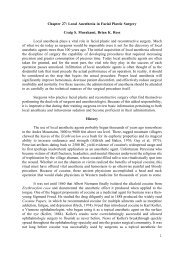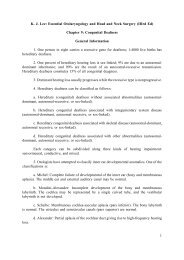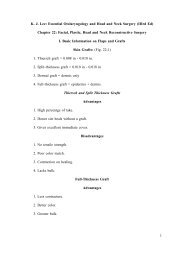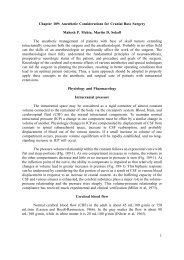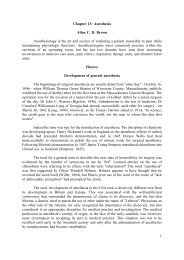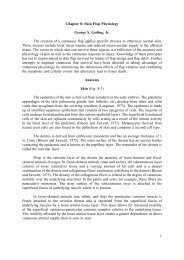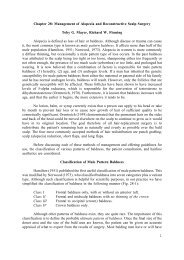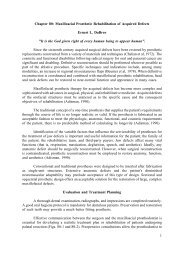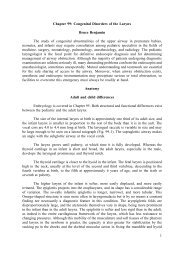Create successful ePaper yourself
Turn your PDF publications into a flip-book with our unique Google optimized e-Paper software.
The management can be complicated by the aforementioned autonomic hyperactivitywhich is, if untreated, associated with a higher mortality.The disease may manifest with intermittent spasms of muscle groups and the durationof the periods between attacks depends on the severity of the infection. In patients with a mildform of tetanus, spasms may be caused by stimuli such as noise. Even lightly touching thepatient may cause reflex spasms.Diagnosis and Special InvestigationsThe usual sequence of events is: it starts with involuntary jerking, followed byopisthotonos, trismus, flexion and adduction of the arms (fists held clenched across the chest)and extension of the lower extremities. Dysphagia is often present. The general condition ofpatients usually remain reasonably satisfactory and they are mentally normal.This is a clinical diagnosis, rather than a laboratory diagnosis. Bacteriological studiesmay confirm the clinical suspicion by demonstrating spores or vegetative forms ofClostridium tetani on gram-staining of material from wounds. The organism may be identifiedin anaerobic cultures. However, the organism is frequently not detected by either gram stainor culture, even in the presence of definite tetanus.- Active immunizationProphylaxisThe association of tetanus with various kinds of trauma and other causes of penetrationof spores has been emphasized. As these problems will continue to exist and since the sporesof Clostridium tetani are ubiquitous, the only real answer is to improve the immunity ofeverybody. The disease can theoretically be eradicated by immunotherapy and therecommendations for active immunization are given in table 6.4.3.Table 6.4.3. Schedule of active immunization against tetanusDose Age/Interval VaccineAge less than 7 years1st dose Age 6 weeks or older DPT2nd dose 4-8 weeks after first dose DPT3rd dose 4-8 weeks after second dose DPT4th dose About 1 year after third dose DPTBooster 4-6 years of age DPTAdditonal boosters Every 10 years after last dose TdAge 7 and older1st dose First visit Td2nd dose 4-6 weeks after first dose Td3rd dose 6 months-1 year after second dose TdBoosters Every 10 years after last dose TdDPT - Diphtheria and tetanus toxoids and pertussis vaccine absorbed.Td - Tetanus and diphtheria toxoids absorbed (for adult use).43




